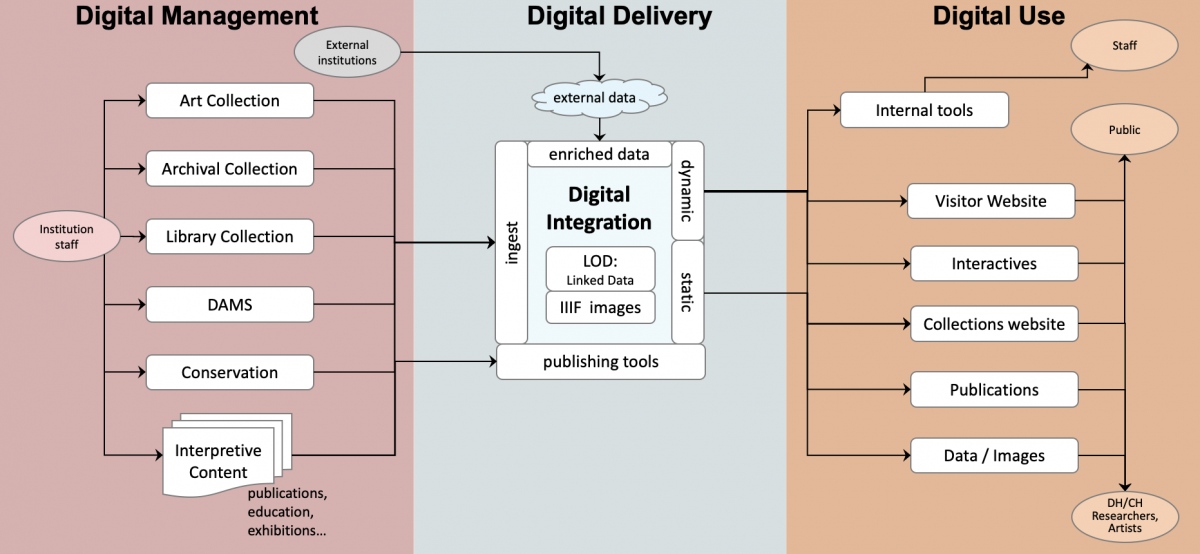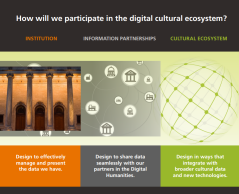Create and implement your digital information strategy
You are working to define or update an achievable digital information strategy that supports your institution’s mission, establishes actionable roadmaps for near and long-term activity, and ensures integration with current and future technologies. With years of digital strategy experience in cultural heritage, we understand the opportunities available to humanities organizations, to help you navigate a sustainable plan of action.
Understand what your users and contributors need
You wish to provide meaningful and engaging experiences that support your public audiences, your staff, and your institutional partners in the ways they use your information resources and interpretive programs. We are experts in capturing and understanding user needs and expectations, and translating those into implementable and usable designs within your institutional context.
Craft a rich, exploratory “digital cultural ecosystem”
Discovery and serendipity within integrated collections is a user-empowering goal – whether those collections are held within one institution or woven among multiple institutions. Our collaborative work with you identifies and captures the valuable relationships in data across records and collections. Linked data, immersive browsing, high-resolution IIIF images and digital content publication are key tools we use to support integration, yet the key to success lies in sharing a vision.
Iteratively creating exploratory interfaces increases your content's value over time and use. An integrated ecosystem provides downstream benefits as you can efficiently use your data in new ways, helping to manifest new ideas and more quickly create information products.

Digital Ecosystem illustration of elements that may be included.
Example from our work with the Georgia O'Keeffe Museum.
Some example projects
- The Georgia O’Keeffe Museum Collections Online is a broad linked data ecosystem for the art collections, archives, her personal belongings, library, people/organizations, exhibitions and digital publications.
- Missouri Remembers is a growing artist-focused information resource about Missouri-based artists over the past 200 years (prepared for the state bicentennial in 2021). Artists are mapped to their related arts organizations and exhibitions.
- The Duchamp Research Portal is an extensive, multilingual integration of archival collections and related art collections featuring the life and work of Marcel Duchamp and the Duchamp family. The site is a partnership led by the Philadelphia Museum of Art in collaboration with the Centre Pompidou and the Association Marcel Duchamp in Paris.
- The Texas Coastal Bend Collection captures the character of a multicultural ranching community in southeast Texas. This design case study (2018) describes the features and approach taken to reflect the rich scope of the archival materials.
View our Insights for cultural heritage talks and articles.
Learn more about participating in the digital cultural ecosystem:

